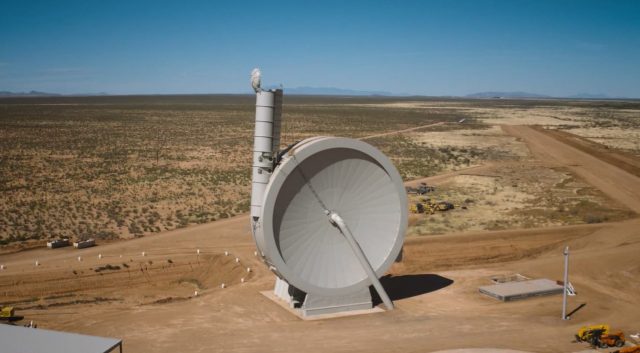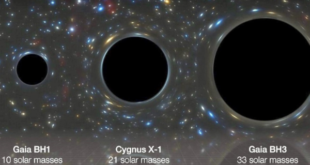
Given the number of exploding rocket videos on the internet, it should come as no surprise that getting to space is hard. It takes a lot of energy to break free of Earth’s gravity, and that currently means strapping our precious cargo to what is essentially a tube full of explosives. A company called SpinLaunch made waves a few months ago with a successful test of its centrifuge-based kinetic launch system, which needs far less energy than a traditional rocket. Now, NASA is interested and has announced an upcoming test flight using SpinLaunch technology.
SpinLaunch managed its first major test last October, heaving a test vehicle thousands of feet into the air. The system consists of a centrifuge propped up on the ground like a giant wheel. Inside, the system is kept in a vacuum to reduce friction, which allows the centrifuge to reach incredibly high speeds. In less than a millisecond, the arm releases the vehicle, which shoots out of a chimney-like structure poking up above the rest of the apparatus.
NASA seems to have liked what it saw. It has contracted with SpinLaunch to develop, integrate, and fly a demo payload on the company’s suborbital accelerator. This is part of NASA’s Flight Opportunities Program, which explores promising technologies for the future of space exploration. The company hopes to fly this mission later in the year and will develop systems to ensure recovery of the payload in one piece. SpinLaunch sees this as a major milestone for the company as it pivots from technology development to commercial offerings.
SpinLaunch’s current missile-shaped payload.
SpinLaunch says that its launch technology takes 70 percent less fuel and ground infrastructure to launch a payload, as it needs only a small propulsive second stage to attain orbit after reaching the edge of space. There’s one important catch: the technology has not shown it can reach orbit yet. The current version of SpinLaunch’s technology is called the A-33 Suborbital Mass Accelerator, and it’s a one-third-scale version of the machine it would like to build. That version would reach speeds of 5,000 miles per hour (8,000 kph) inside the chamber, which would mean no crewed launches unless you hate having bones.
The larger centrifuge is still purely theoretical. Yes, you can build a larger A-33, but the speeds necessary to reach orbit are extreme. The payload would go from no friction to full ocean-level air pressure when it leaves the tube. A rocket, by comparison, accelerates continuously, only reaching escape velocity when it’s high up where air pressure is lower. These are the kinds of problems it will take time and effort to address. NASA’s desire to fund SpinLaunch’s exploration of kinetic launches is a good start, though.
Now Read:
Subscribe Today to get the latest ExtremeTech news delivered right to your inbox.
© 1996-2022 Ziff Davis, LLC. PCMag Digital Group
ExtremeTech is among the federally registered trademarks of
Ziff Davis, LLC and may not be used by third parties without explicit permission.
We strongly encourage you to read our updated PRIVACY POLICY and COOKIE POLICY.
 #Bizwhiznetwork.com Innovation ΛI |Technology News
#Bizwhiznetwork.com Innovation ΛI |Technology News



